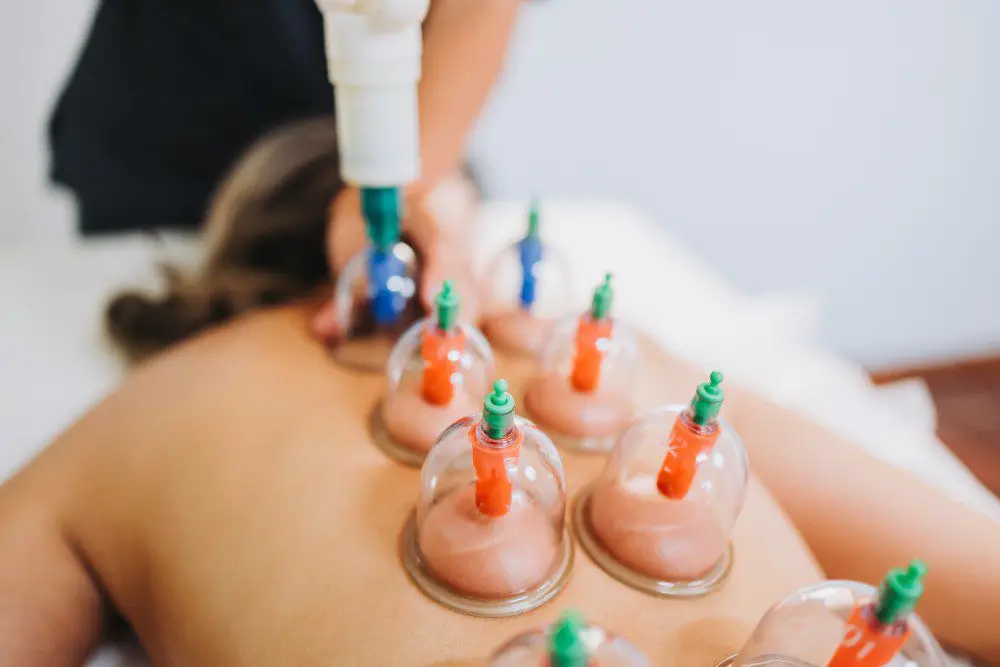In recent years, cupping massage has been increasingly used to activate lymphatic drainage due to its potential benefits in promoting the flow of lymphatic fluid through the body and activating the cleansing of waste from the body.
Cupping has been used for centuries as a therapeutic modality in traditional medicine systems around the world. Its use has evolved over time and is currently gaining popularity in various health and parasanitary practices, including massage therapy.
In this article, we will explain the technical aspects of lymphatic cupping, including its history, techniques, indications, and contraindications.
Cupping, a remedy for many ailments
Cupping, whose history dates back thousands of years, is one of the oldest known healing practices. Its origins date back to the ancient civilizations of Egypt, Greece, China and the Middle East.
The earliest records of cupping are found in the Ebers Papyrus, an ancient Egyptian medical text from around 1550 BC. Cupping is also mentioned in the famous Chinese medical text "The Yellow Emperor's Classic of Internal Medicine", written over 2,000 years ago.
Throughout history, cupping has been used as a remedy for many ailments, from pain relief to respiratory problems. Over time, various cultures and regions have developed unique techniques and applications.
Today, cupping has become a popular and widely practiced form of complementary care around the world, accepted for its potential to relieve pain, promote healing, and support overall well-being.
Massage therapists can use cupping to improve lymphatic circulation and improve patients' health.
How do cupping promote the circulation of lymphatic fluid?
Cupping therapy involves applying suction cups to the skin and using suction. Suction cups are usually made of glass, plastic or silicone. Suction can be created manually with a hand pump or, as in the case of silicone suction cups, by squeezing them, or automatically with an electric pump.
Some of these automatic pumps are quite sophisticated and use computer control cards to create exact amounts of suction and be able to vary the suction over time, these types of suction cups are more geared toward healthcare. Others are simply a bomb and are usually the most widespread for use in massage and personal care due to their easy use and learning, always guided by a professional to know their limits and risks.
When placed on the skin, the suction effect draws the skin and underlying soft tissues towards the suction cup, which increases blood perfusion in the local capillary bed, so we all understand, it absorbs the skin and attracts blood, which can generate a movement of fluids that favors the adaptation of the nervous system when establishing muscle tone or perceiving pain and encourages the movement of lymphatic fluid.
The amount of suction used, the length of time the suction cup is held in place, and the amount of shear force created by moving the cup or tissue beneath it are variables that a trained osteopath will manipulate to obtain the desired result in a procedure with suction cups.
Cupping for lymphatic drainage
Not all cupping techniques work to treat the lymphatic system; However, several basic cupping techniques, such as instant cupping, rapid cupping, and massage cupping (also known as dynamic), can be used for this purpose.
These techniques have a few things in common, namely: light suction, very low retention times, and low shear force. These techniques are also rhythmic in their application.
- Flash cupping consists of placing a suction cup on the area to be treated and removing it almost immediately, then placing it again and removing it repeatedly during the treatment time. This technique is performed with very light suction and the suction cup is quickly removed, creating a clicking sound.
- Quick cupping is a technique in which a few suction cups are placed on the body very close together, usually in a row, and then the first one that has been applied is removed and the others are jumped along the row that is being applied. treating. The suction strength is light to medium.
- Massage cupping involves sliding the suction cups across the skin to mobilize lymphatic fluid. Typically, with lymphatic cupping, this is done with relatively light pressure, usually moving quite slowly and with short strokes.
Cupping for various lymphatic conditions
Cupping may be beneficial for people with various lymphatic conditions, such as lipedema, lymphedema, inflammation from injuries, postoperative inflammation, and poor lymphatic circulation.
Cupping is useful in the treatment of chronic pain when there is an inflammatory component. There are some case studies where lymphatic cupping is used with athletes who want to recover from intense training or competitions.
Cupping may be useful in cases of chronic edema, where lymphatic cupping appears to give better results than manual lymphatic drainage. The hypothesis is that this result is due to tissue provocation caused by the suction of the cups, which is not present in typical manual lymphatic drainage techniques.
The cupping technique can be used in conjunction with other lymphatic drainage techniques to improve treatment results. These other techniques include manual lymphatic drainage, kinesiological taping, combined decongestive treatments, exercises or dry brushing.
Cupping is often combined with manual lymphatic drainage techniques when the volume of edema is such that the skin has become fragile. Manual techniques are better suited to treat this problem, so manual lymphatic drainage can be used on fragile skin and lymphatic cupping on healthier skin.
Movement is usually added to these treatments, it is common as home care for patients with swelling, as movement can be done passively during treatment and active movement can be given to the client to do at home to extend the muscles. treatment results.
Contraindications and safety considerations
Although the cupping technique can be beneficial for many people, there are certain contraindications that should be taken into account. Cupping should not be applied to areas with open wounds or broken skin.
- In general, cupping is not usually applied to swollen or inflamed areas; However, in lymph node cupping, the cups are only used with light to medium suction and are never left still for a long time, so with these modifications, it is safe to apply cupping to these areas.
- Cupping should be avoided on varicose veins and areas of thin, fragile or sensitive skin. People with bleeding disorders, skin conditions, or a history of blood clotting problems should also avoid cupping or consult a qualified medical professional before undergoing treatment.
- Caution should be taken in cases of anemia and during pregnancy. The client's medication must also be taken into account, since many medications can facilitate the appearance of bruises and that is something that must be avoided.
Research on cupping for lymphatic drainage
There aren't many studies available on the use of cupping for lymphatic drainage, but some are promising:
Weber stated that negative pressure treatments could be useful in treating postoperative inflammation. In this study, the negative pressure treatment had a better result in terms of pain control than the manual lymphatic drainage treatments that were the control of the study.
This finding was also found in A study by Vuorinen, et al. in 2013, where they found that a negative pressure device gave better results than regular manual lymphatic drainage treatment in changes in limb volume and in measures of tissue stiffness and in quality of life (as tested in the experiment).
Others studies reinforce these results. And these results appear to be consistent regardless of the type of inflammation, from lymphedema to inflammation from traumatic injury to postoperative inflammation.
Most of these studies are performed with a negative pressure machine programmed to use light to medium suction on several different settings specific to treating the lymphatic system in various scenarios. This is not difficult to simulate using manual cupping, making it comparable to a lymphatic cupping treatment.
In a study by Rodríguez-Huguet, the results of using this machine are compared with those of traditional suction cups and it is observed that the results of using the machine are comparable to those of the suction cup technique.
Cupping is one of the oldest healing practices, with origins dating back to ancient civilizations.
Cupping therapy promotes clients' lymphatic health
Cupping is a traditional technique that offers numerous benefits for lymphatic drainage. Thanks to its long history of use and growing body of evidence, cupping has gained recognition as a valuable modality to support lymphatic health and overall well-being.
In a clinical setting, lymphatic cupping is often incorporated into a comprehensive treatment plan based on the client's desired results, current medical history, and indications and contraindications. The masseuse begins by evaluating the client's general condition and your lymphatic system. With that information, the practitioner can determine appropriate cupping techniques based on the client's condition and medical history.
Massage can use a combination of flash, rapid and massage cupping techniques to target specific areas of concern. Cupping is often combined with other manual lymphatic drainage techniques, such as light massage and gentle movement, to optimize treatment results.
As with any treatment, it is essential to approach lymphatic cupping with a thorough understanding of the techniques, indications and contraindications to ensure safe and effective results for clients. Courses that teach cupping typically focus on pain relief and range of motion, with only a passing mention of lymph node cupping. Professionals interested in this modality should look for courses that focus on the lymphatic system in order to offer a better experience in each session.




